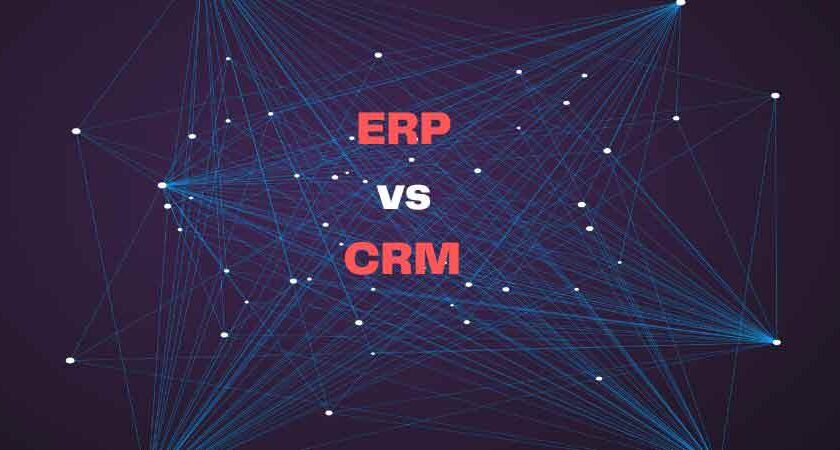CRM vs ERP: Understanding the Differences
In today’s fast-paced business landscape, organizations are constantly striving to optimize their operations and improve customer satisfaction. Two key systems that play a vital role in achieving these goals are Customer Relationship Management (CRM) and Enterprise Resource Planning (ERP). While both CRM and ERP solutions are designed to enhance business efficiency, they serve distinct purposes and cater to different aspects of an organization’s operations. In this blog post, we will delve into the world of CRM and ERP, exploring their features, benefits, and the key differences between them.
What is CRM?
Customer Relationship Management (CRM) is a software system that enables businesses to manage and nurture their customer relationships effectively. It centralizes customer data, interactions, and communication channels, providing a comprehensive view of each customer’s journey. CRM systems allow organizations to track sales leads, manage customer support, streamline marketing campaigns, and analyze customer behavior to make informed business decisions.
Key features of CRM
- Contact management: CRM systems store detailed customer information, including contact details, purchase history, preferences, and interactions.
- Sales force automation: CRM helps streamline the sales process by automating tasks such as lead management, opportunity tracking, and sales forecasting.
- Customer service and support: CRM allows organizations to track customer issues, manage support tickets, and provide efficient resolution to enhance customer satisfaction.
- Marketing automation: CRM enables targeted marketing campaigns by segmenting customers based on their preferences, purchase history, and behavior.
- Analytics and reporting: CRM systems provide valuable insights into customer trends, sales performance, and marketing effectiveness through analytics and reporting features.
What is ERP?
Enterprise Resource Planning (ERP) is a comprehensive software solution that integrates various aspects of a business’s operations into a single, unified system. ERP systems are designed to streamline and automate core business processes, including finance, human resources, inventory management, procurement, manufacturing, and more. By consolidating data and processes, ERP provides real-time visibility into different departments, enhancing collaboration and decision-making across the organization.
Key features of ERP
- Financial management: ERP systems streamline financial operations, including general ledger, accounts payable, accounts receivable, budgeting, and financial reporting.
- Supply chain management: ERP facilitates efficient management of the supply chain, including inventory control, demand planning, procurement, and supplier relationship management.
- Human resource management: ERP helps manage employee information, payroll, benefits administration, training, and performance evaluation.
- Manufacturing and production: ERP systems optimize manufacturing processes, including resource allocation, production planning, quality control, and shop floor management.
- Business intelligence and reporting: ERP solutions provide comprehensive reporting and analytics capabilities, offering valuable insights into business performance and trends.
CRM vs. ERP: Understanding the Differences
Scope and Focus
CRM primarily focuses on managing customer interactions, sales, and marketing activities. It is centered around enhancing customer relationships, improving customer satisfaction, and driving sales growth. On the other hand, ERP takes a holistic approach by integrating and managing various business processes across different departments, including finance, human resources, and supply chain.
Data and Integration
CRM systems primarily store customer-centric data, such as contact information, communication history, and purchase behavior. ERP, on the other hand, consolidates data from multiple departments, enabling cross-functional visibility and integration. ERP acts as a backbone for the organization, while CRM complements ERP by focusing on customer-centric operations.
Operational Focus
CRM systems are designed to streamline customer-facing activities, such as sales, marketing, and customer service. They provide tools to manage leads, track customer interactions, and analyze customer behavior. ERP systems, on the other hand, are geared towards optimizing internal processes and operational efficiency. They automate and integrate functions like finance, procurement, manufacturing, and inventory management.
Departmental Integration
CRM solutions primarily serve sales, marketing, and customer service departments. These departments heavily rely on CRM functionalities to streamline their daily activities. ERP, on the other hand, integrates multiple departments, providing a unified platform for finance, HR, supply chain, manufacturing, and more. It ensures data consistency, eliminates silos, and enables cross-functional collaboration.
Conclusion
CRM and ERP systems are essential tools for modern businesses seeking to optimize their operations and enhance customer satisfaction. While CRM focuses on managing customer relationships, sales, and marketing, ERP takes a broader approach, integrating various departments and processes.
Understanding the differences between CRM and ERP is crucial for organizations to select the right solution that aligns with their specific needs and objectives. By leveraging the power of CRM and ERP, businesses can streamline their operations, improve customer engagement, and gain a competitive edge in today’s dynamic market.
